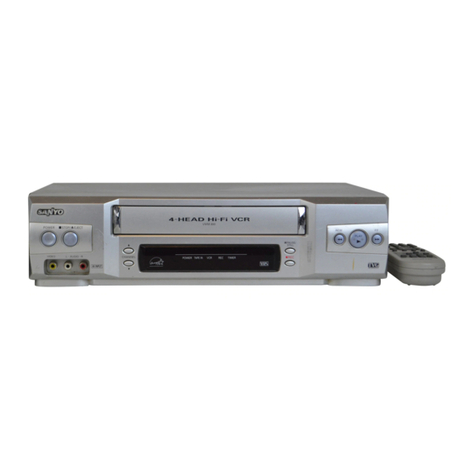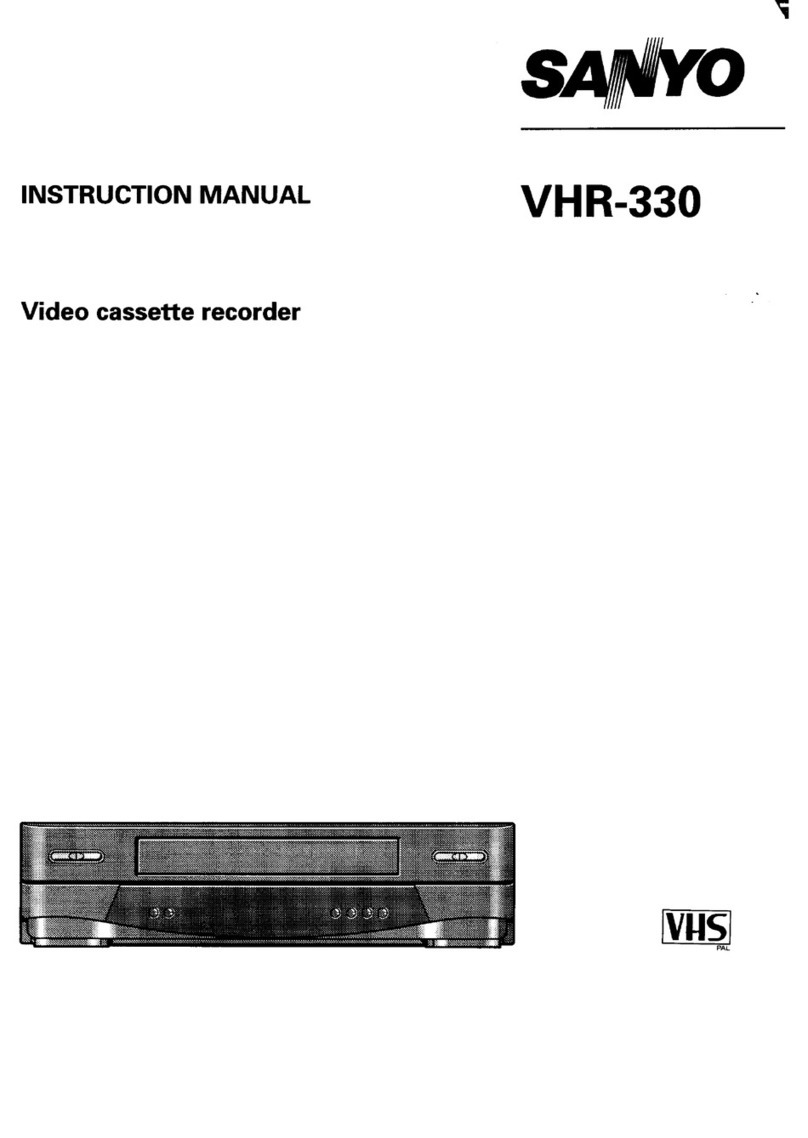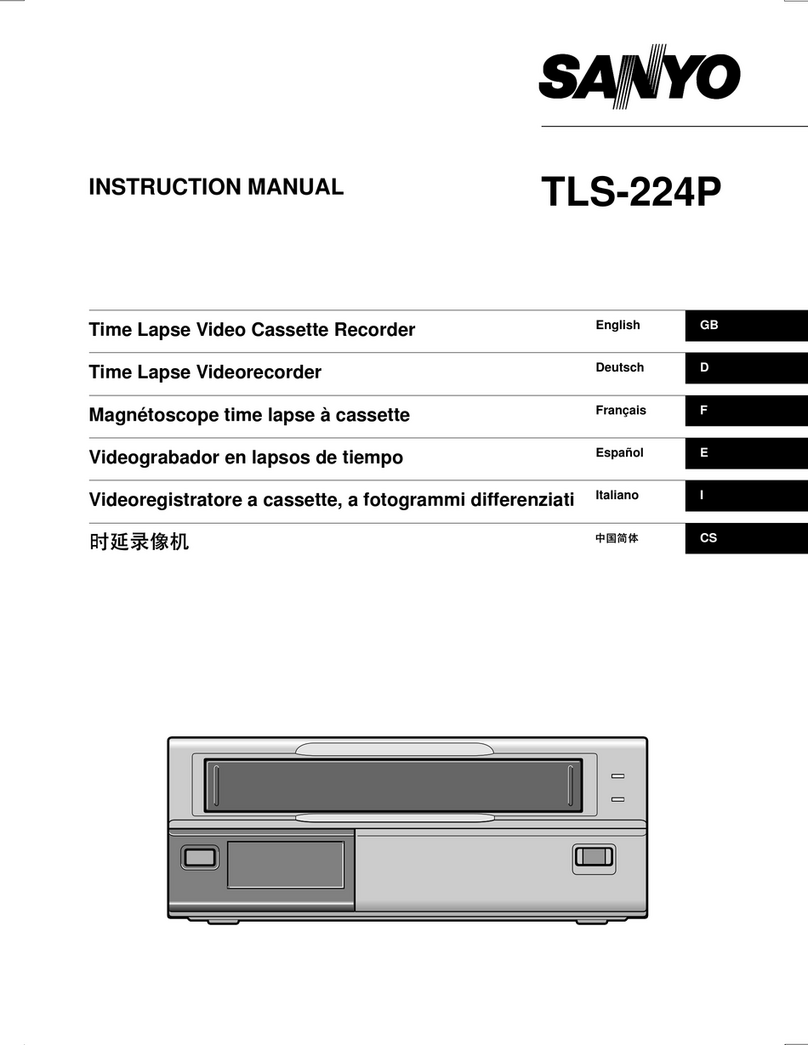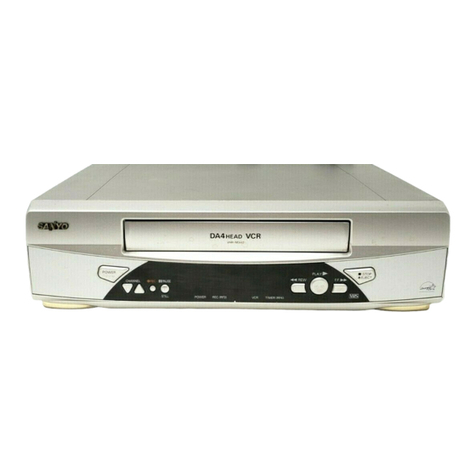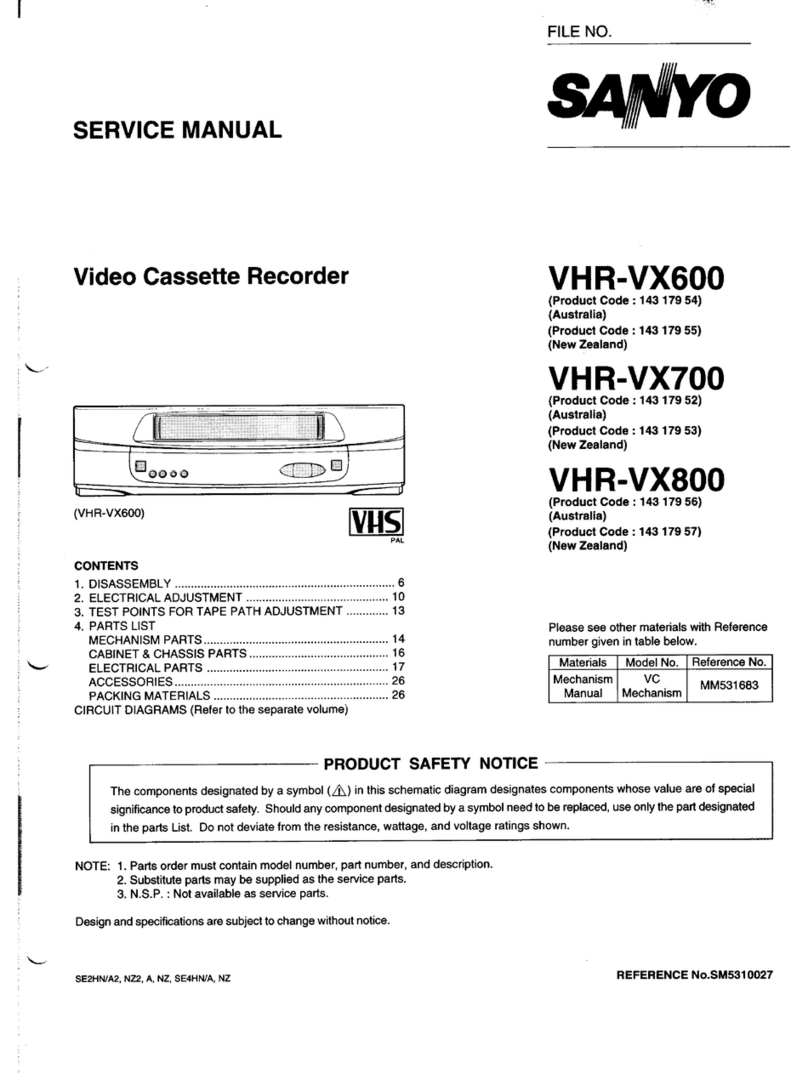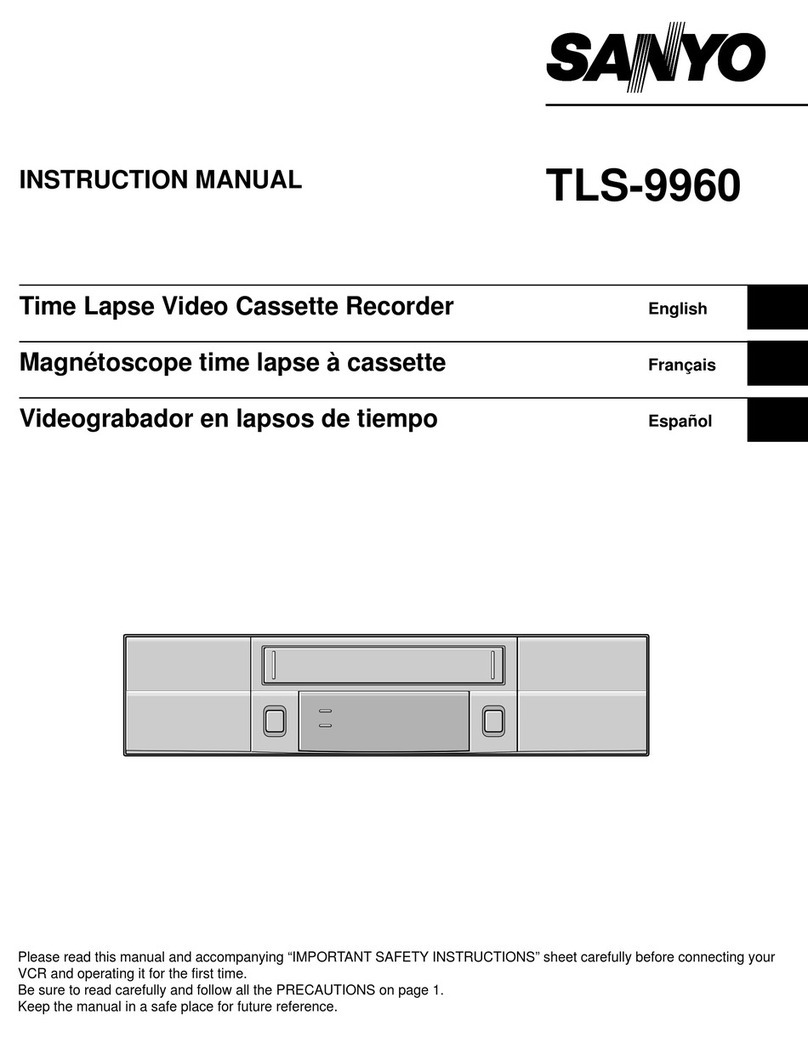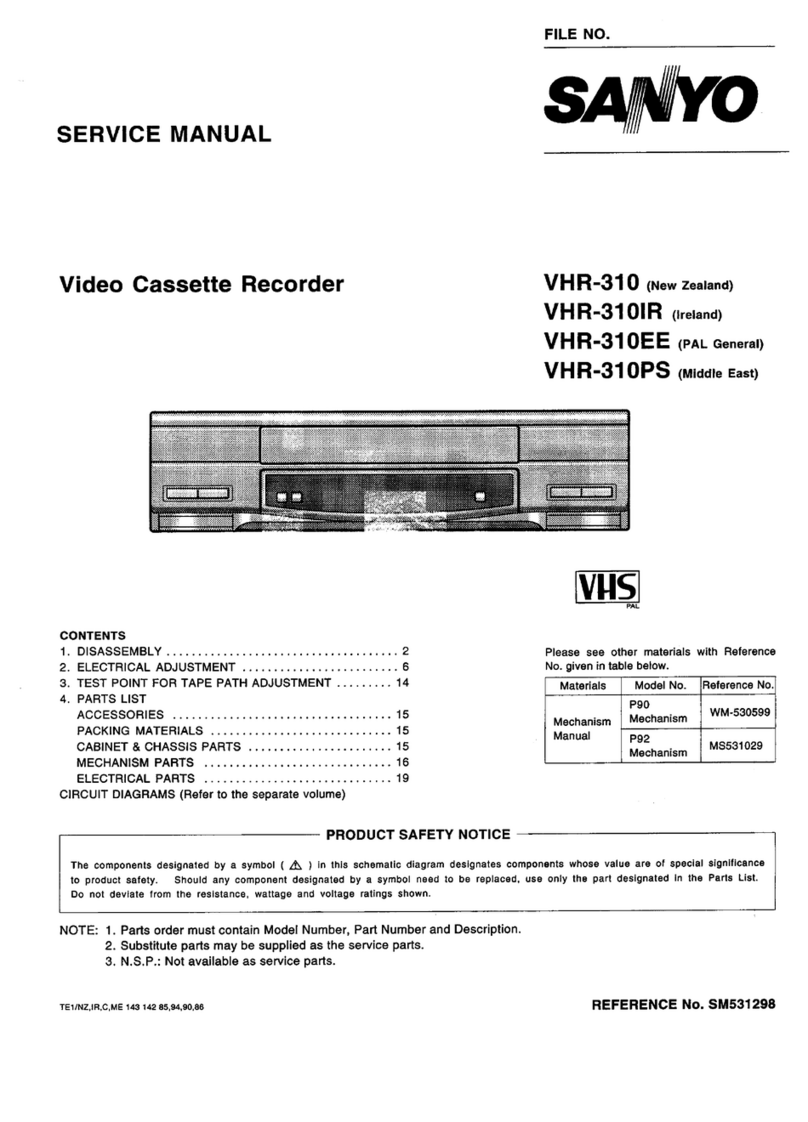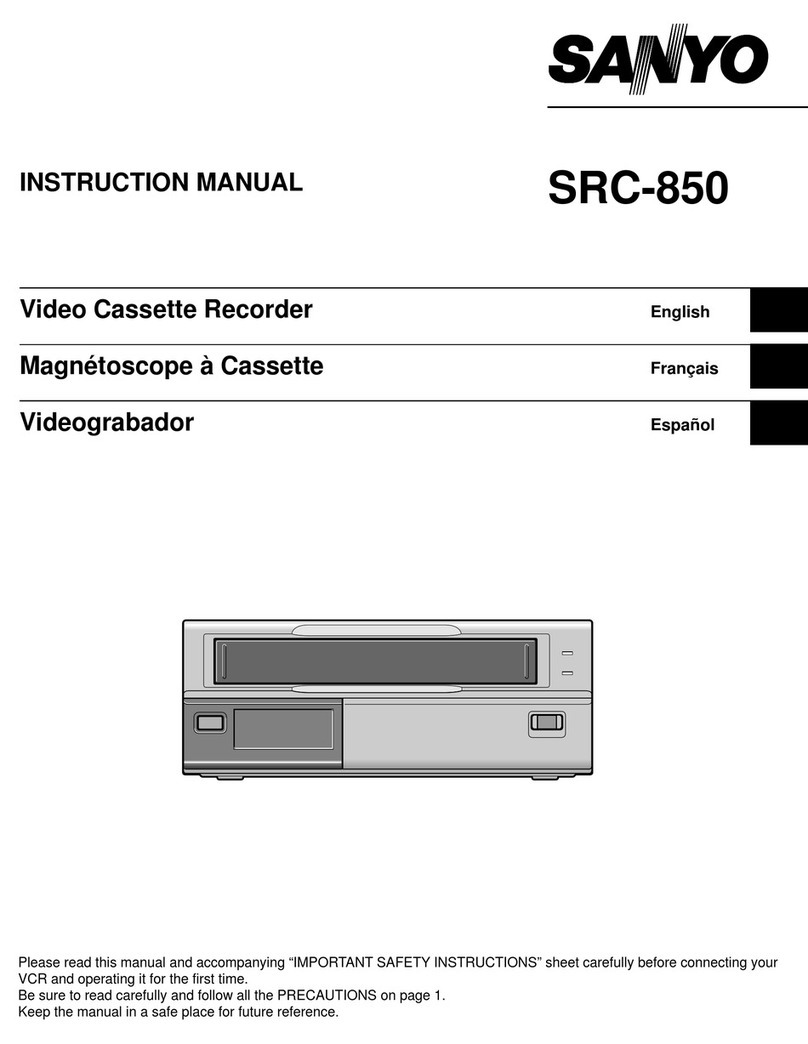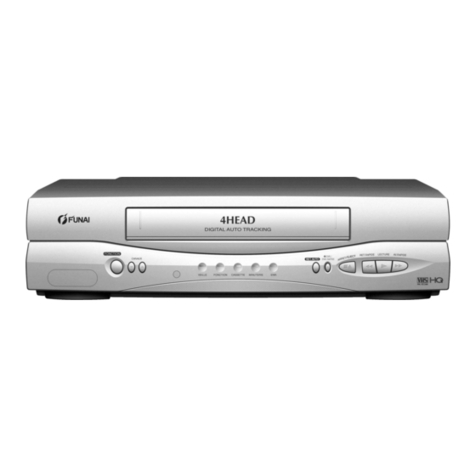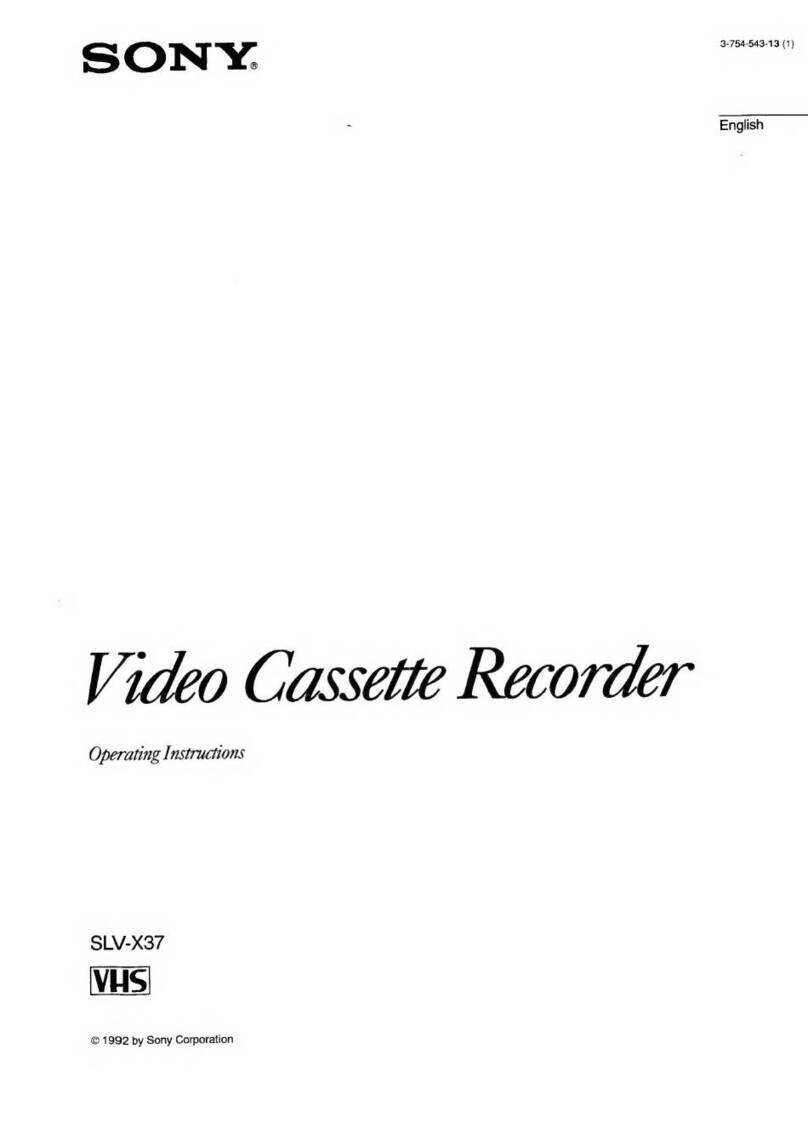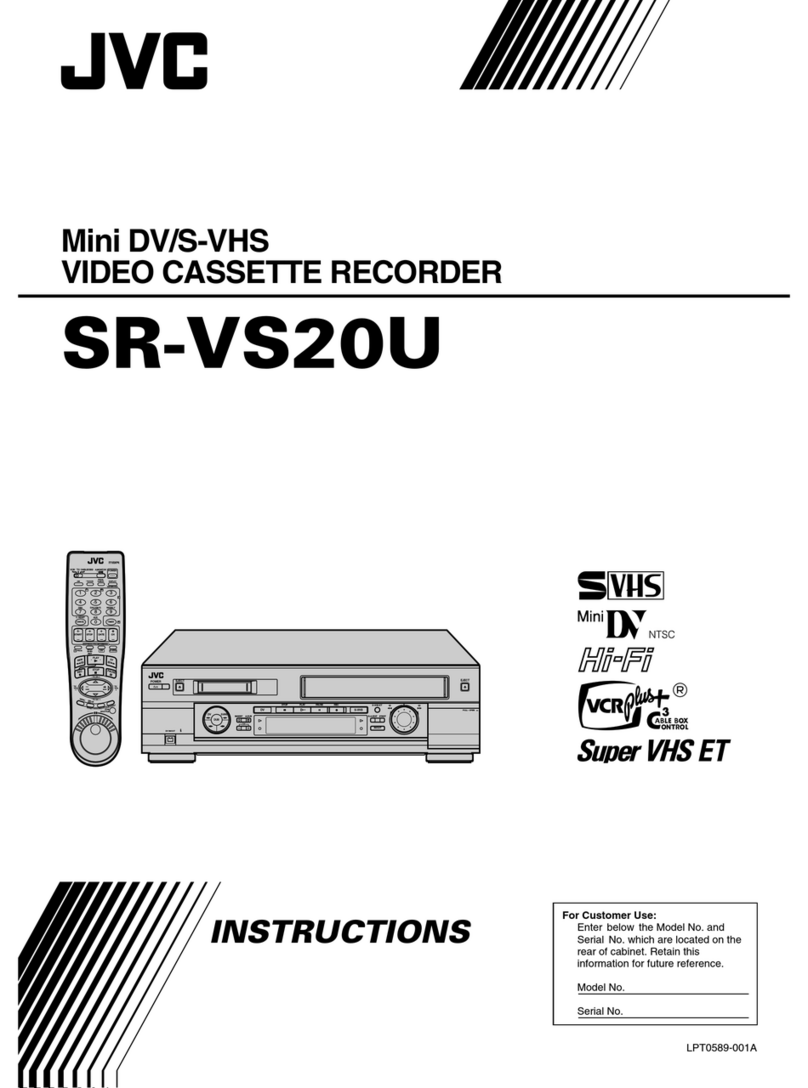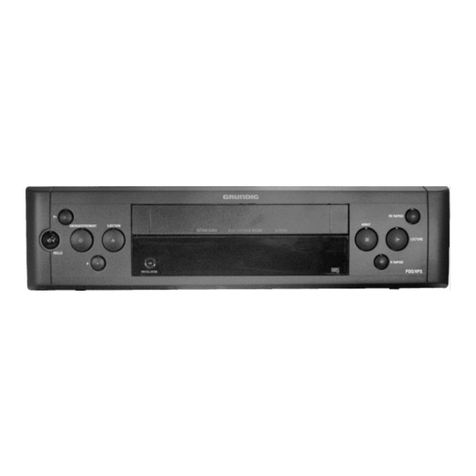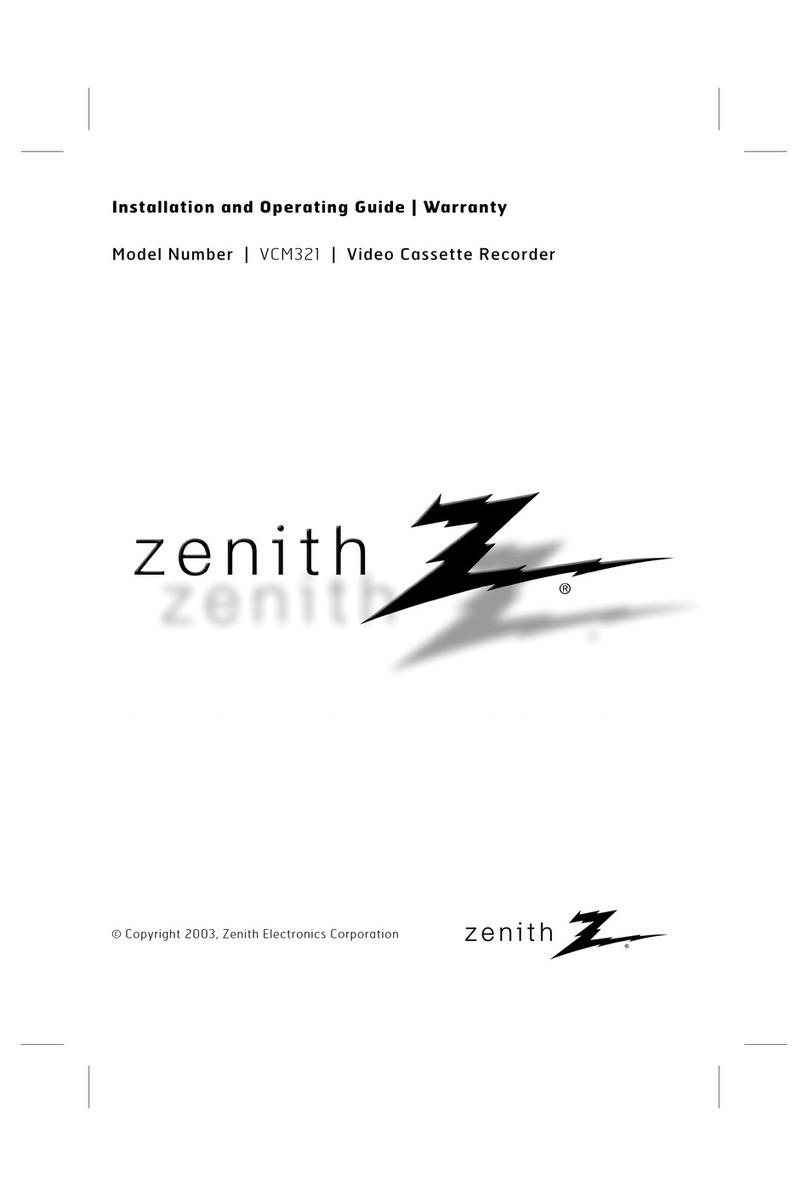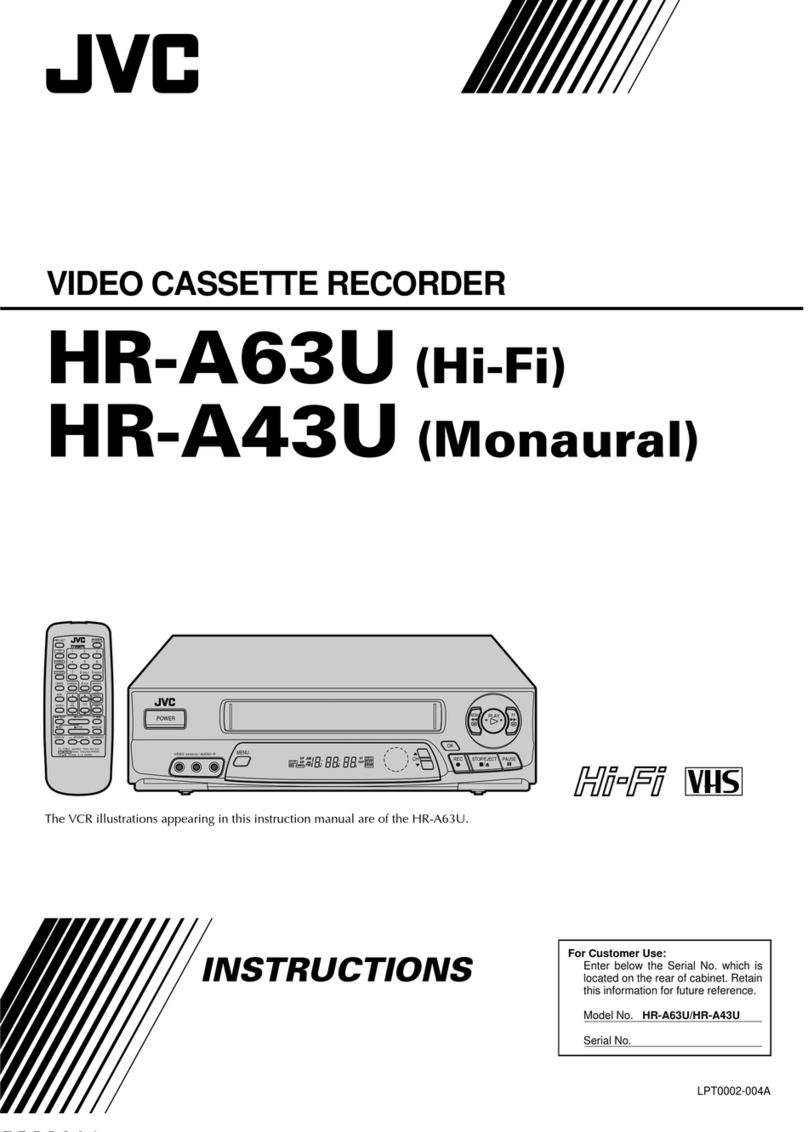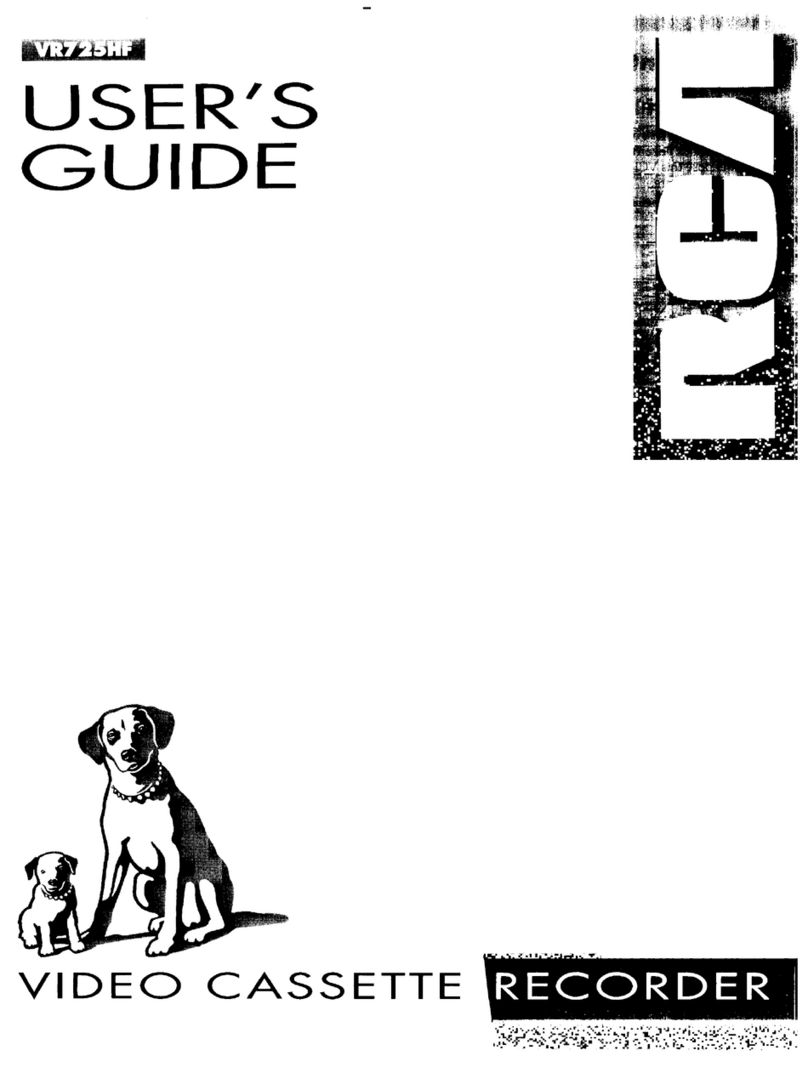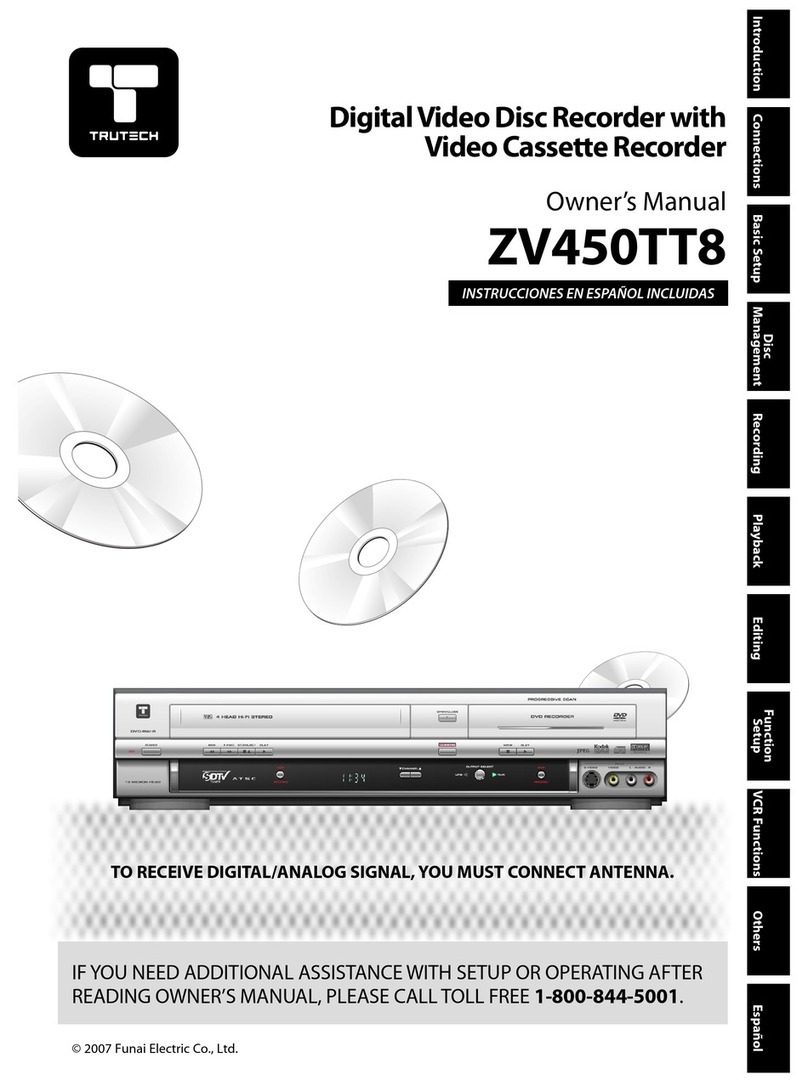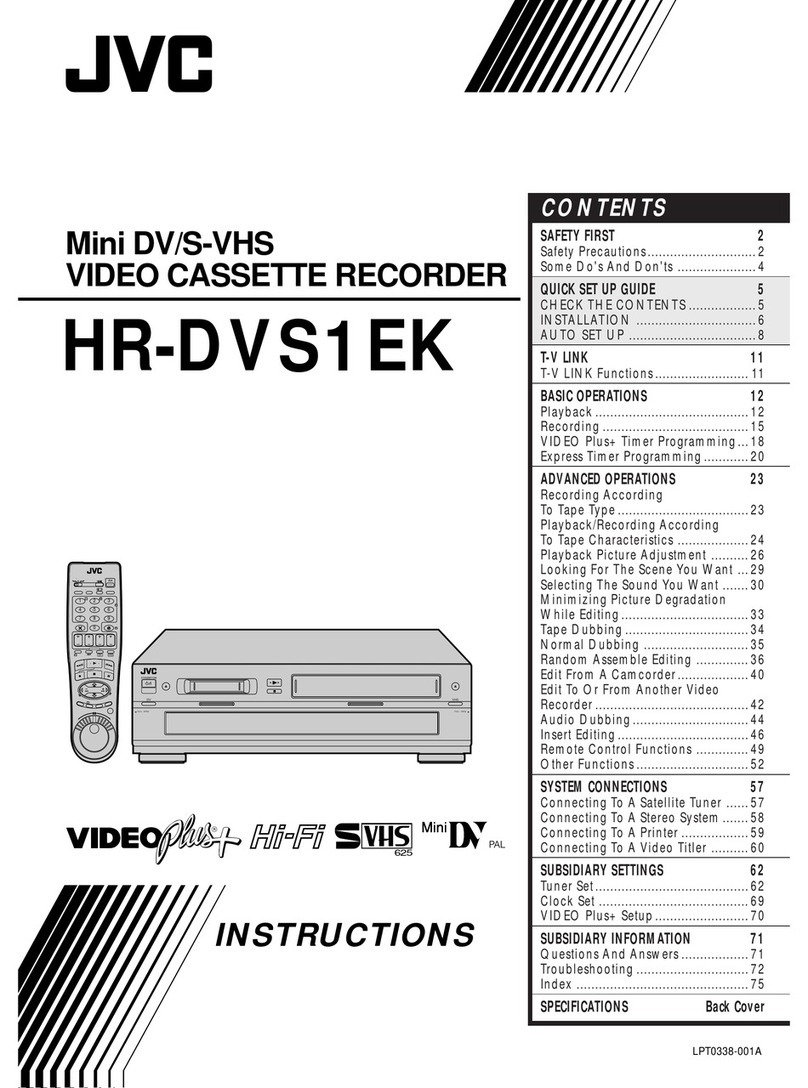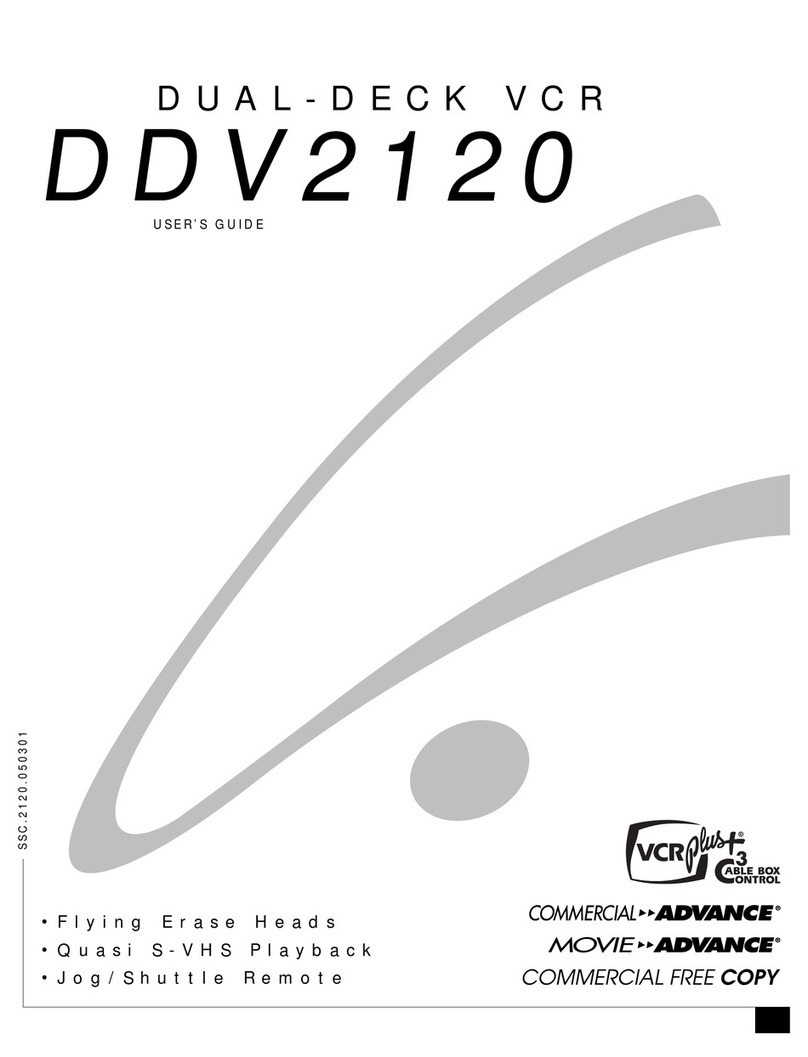
3-1-2. OPERATIONS AFTER SHIFTING TO THE
1)
2)
3)
SERVICE MODE
By continuously pressing the channel button ((+) or
(A)) of the main unit or remote controller, the loading
motor rotates in the loading direction, and the mode
of the mechanism is shifted from the EJECT position
to the FF/REW position of the final mode.
At the same time, the mechanism mode (2-digit
number) currently shifted to is displayed on the
display tube in order. At this time, the drum motor
(“motor, rotor cyl dc 2W VC”) and capstan motor
(“motor, capstan dc 3W VC”) will not rotate.
To shift the mode of the mechanism from the FF/REW
position in the unloading direction (EJECT position
direction), continue pressing the channel button ((-)
or (Y)) of the main unit or remote controller.
At this time, the drum motor will not rotate, but the
capstan motor will rotate in the direction in which
the tape is rewound by the supply reel table.
Continue pressing the PAUSE/STILL button for the
supply reel table ;O wind the tape.
Note 1: To shift in the PLAY, FF/REW directions
without loading the cassette tape, refer to
Fig. 3-1-2, press the “lever, lid opener VC”
~of the “compl, cassette mecha VC” from
the top to release the lock, and make sure
the “stand, IVC” @does not get caught.
@Stand,
pener vc
3-2. DRIVING THE LOADING MOTOR
(“ASSY, MOTOR LOADING BB VC”)
BY SUPPLYING DC VOLTAGE
The loading motor shown in Fig. 3-2-1 (“assy, motor
loading bb VC”) can be driven by supplying DC6V to
DCIIV voltage to its terminals.
1) Disconnect the power plug.
2) Refer to 4-1, and remove the mechanism unit.
3) To rotate in the PLAY and FF/REW directions, connect
the +pole to terminal Aand the -pole to terminal B.
To rotate in the EJECT direction, connect the –pole
to terminal Aand the +pole to terminal B.
Note 1:
Note 2:
To rotate in the PLAY, FF/REW directions,
refer to Fig. 3-1-2, press the “lever, lid
opener VC” @of the “compl, cassette mecha
VC” from the top to release the lock, and
make sure the “stand, iVC” @does not get
caught.
If the loading motor (“assy, motor loading
bb VC”) stops rotating after shifting to the
FF/REW and EJECT modes, stop supplying
the DC voltage.
Arrow indicating EJECT direction.
t
Assy, motor loading bb vc
IVc 3-3. OPERATING THE
1)
2)
Fig. 3-1-2
3-1-3. EXITING THE SERVICE MODE
1) The service mode can be exited by turning off the
power.
2) After exiting the mode, normal operations can be
performed.
Fig.
MECHANISM
MANUALLY
3-2-1
Refer to 4-1 and remove the mechanism unit.
Rotate the loading motor (“assy, motor loading bb
VC”) at the bottom of the mechanism unit with your
finger.
For the unloading direction (EJECT direction), rotate
the loading motor (“assy, motor loading bb VC”) in
the direction of the arrow marked on the loading
motor (“assy, motor loading bb VC”) with your finger.
For the loading direction (FF/REW direction), rotate
in the opposite direction of the arrow. (Refer to Fig.
3-2-l.)
-9-
